“She doesn’t look good.”
“I’ve never seen her like that. Just collapsed on the side of the road and refused to move. I had to drag her back on to her bike. Force her to pedal. I told her she’d die of exposure if she didn’t move, but she didn’t seem to care.”
“Must be the altitude.”
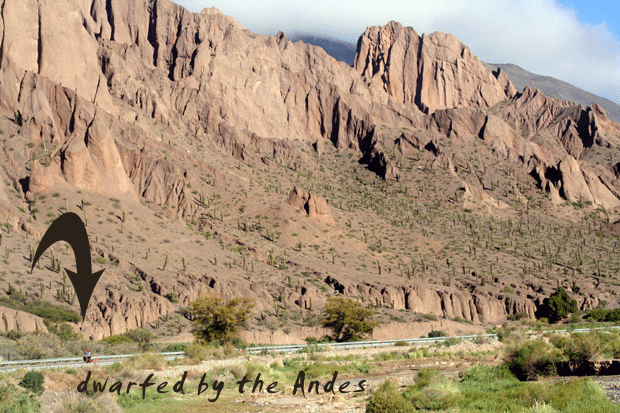
I lay huddled under a mass of blankets listening to Eric discussing my situation with a stranger. The stranger’s accent was English and his voice calming and reassuring.
“I’ve got some medicine. Maybe it’ll help.”
Moments later Eric thrust a tiny white pill at me and instructed me to swallow. With a momentous effort I gulped down the medicine. I hoped the Diamox would help.
I was cold, so cold. It felt as if an elephant was lying on my chest. Although the throbbing headache I’d dealt with all day was now but a dull pain, I was weak and nauseous.
I’d never been so thankful for a roof over my head. Just after dawn, when we’d set off from San Antonio de los Cobres, I’d felt vaguely unwell. It had been a long, hard slog up the pass—Los Chorrillos, our highest yet at 4,555 meters. My respiration had been shallow and labored. I’d had to push around the bends in the switchbacks. But I’d made it. We’d snapped a photo and began the long descent.
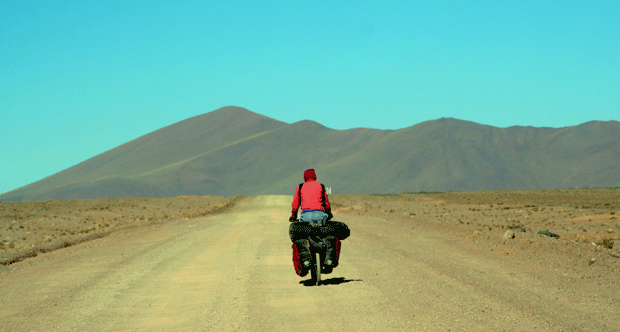
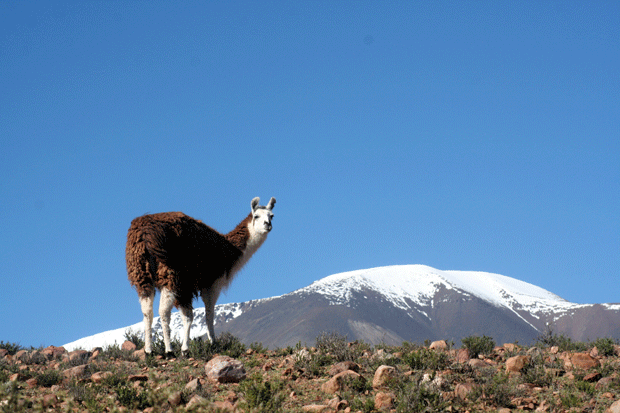
Midway down the dizziness began. Then the slurred speech. Finally I just collapsed. I knew this was the way foolish people died. They just gave up.
The functioning part of my brain knew I had to get back on the bike and pedal. Nights are frigid in the Andes at over 4,000 meters. I couldn’t just lie nestled in the sand until daybreak.
Without Eric to force me back on the bike, I don’t know what would have happened. I’d like to think I would have summoned the energy to go on. I’d have made it to safety and shelter in the tiny railway village of Olacapato. At the very least I’d have had the sense to pitch the tent and protect myself from the freezing temperatures.
But there I was, huddled up on the top bunk in an adobe hovel high up in the Andes. The medicine from the mysterious Englishman—Martin was his name—began to take effect.
Slowly I revived enough to take in my surroundings. I was lying on a dirty foam mattress. Martin’s bike was propped up against one wall and our bikes were stashed away in the opposite corner.
Eric and Martin were busy discussing the route ahead.
“We should be able to make it to the border tomorrow. We’ll be able to get water and apparently the customs guys will give us a place to sleep…”
They droned on about logistics, debating the various route possibilities, exchanging information about purported places to stock up on water, discussing the elevation of passes and the likelihood of headwinds, washboarding and the most dreaded of all road conditions: sand.
I dozed off into a fitful sleep. At 6:30 AM the alarm sounded. Unsure of what to expect on the road ahead, we bolted out of bed in spite of the cold, keen to get an early start.
After bundling up in long thermals, thick fleeces and fuzzy hats we wished Diego, the local schoolteacher who had been our host for the night, well and set off down ‘Highway’ 51 on our way to Paso Sico and the Chilean border.
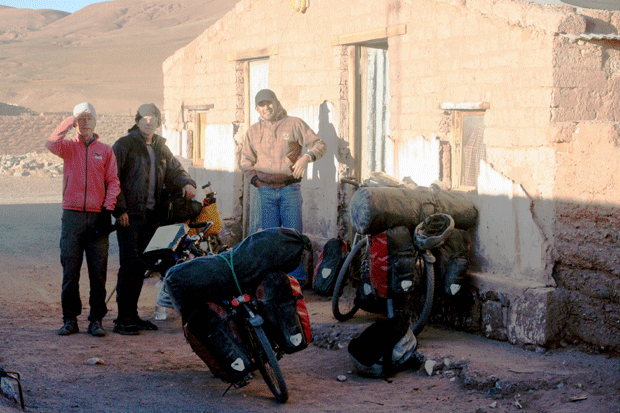
This was day five since we’d left Salta, the last city we’d encounter for a very long while. We’d managed two passes. Alto Chorrillos at 4,555 meters, and Abra Blanca at 4,080 meters. The asphalt had long ago disappeared. So, too had villages and any semblance of civilization. The stark beauty of the Andes surrounded us. Snow-capped peaks of the volcanoes in the distance, sandstone cliffs and llamas grazing in the wide valleys. This sun-scorched region of northern Argentina was dry and desolate. Occasionally we’d spot an adobe hut in the distance but largely the land was uninhabited.
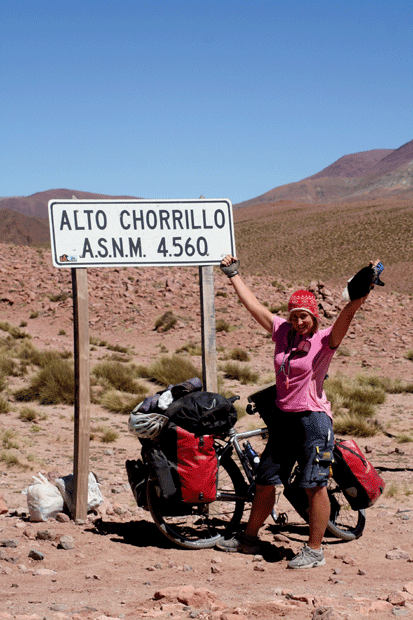
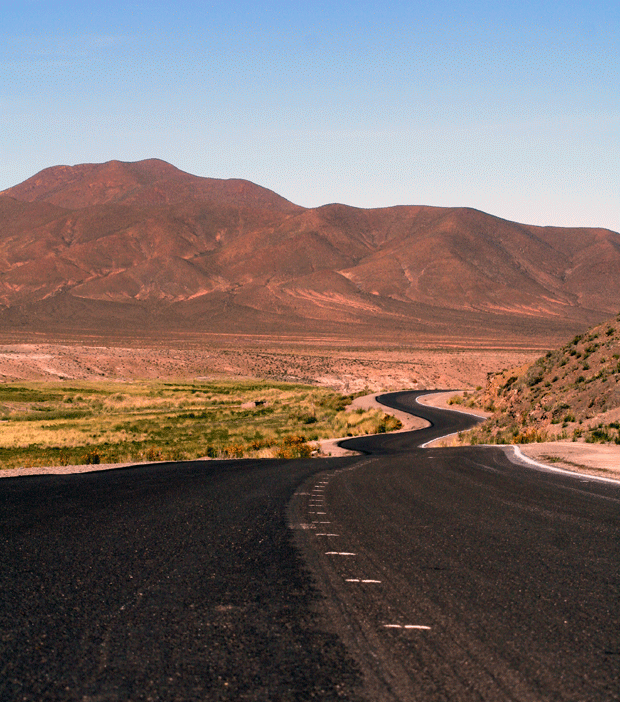
So far, so good. Just out of Salta, we’d camped one night at the gendarmeries. The next night we’d pitched the tent smack dab in the middle of a goat pen perched on the mountainside at some 4,000 meters of altitude.
Thankfully, the goats were absent, still grazing even higher up at their summer pasture. The pen made a fine wind break, but the decaying droppings on which we were camped didn’t do much for my appetite.
Then there’d been the comfort of the village of San Antonio, where I’d enjoyed a hot shower and taken advantage of the running water to wash clothes. Next came our night at Diego’s humble home.
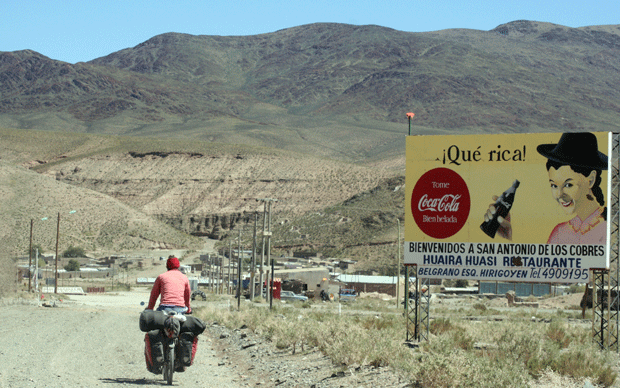
Now we pedaled along easily across the high plateau, Martin, Eric and I. It was a glorious morning for cycling. The sun cast a soft glow over the Andes, the road was hard-packed dirt and there wasn’t a vehicle in sight. My bout with altitude sickness seemed like the distant past and–at that moment– there was no place on earth I’d have rather been. Life was perfect simply cycling through the Andes.
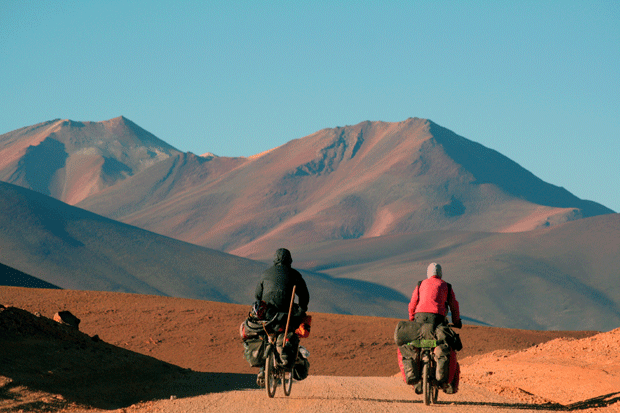
Later that day, as the road turned sandy, the washboarding began and the wind kicked in, life felt a little less perfect.
Looking out over the blinding whiteness of the Salar de Rincon on my left did little to boost my mood as I pushed and prodded my bike along. It was times like these when I questioned our decision to take the hard way round.
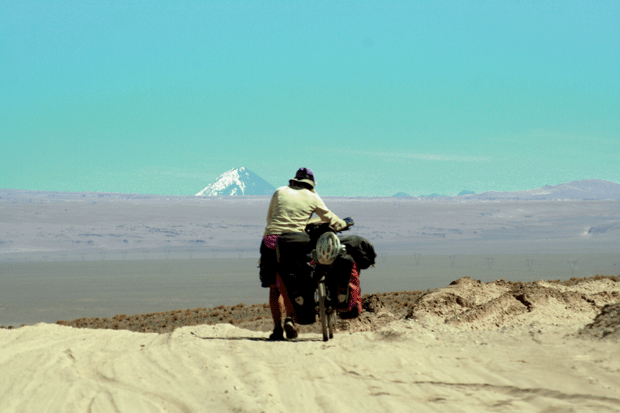
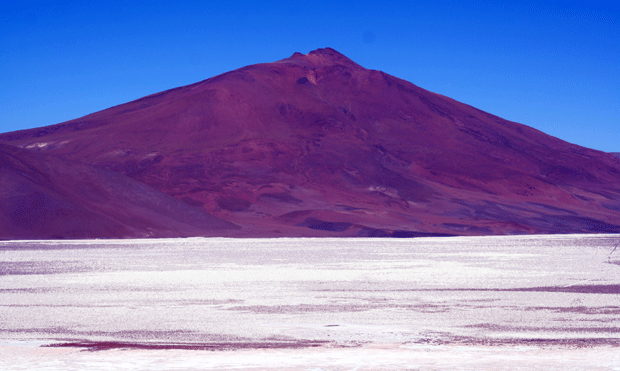
In Africa, the hard way round was usually the only way round. We had to toughen-up and take what the continent dished out.
In South America, there is usually a choice. We could have quite easily followed the nice smooth paved highway over Paso Jama and in to Chile.
But we’d been lured into attempting the higher, remoter and harder Paso Sico by romantic tales told by Brits Harriet and Neil Pike and Canadian Jeff Kruys.
Those intrepid cyclists were to blame.
Particularly Harriet. It’s always easy to wimp out on a challenge which only guys have taken on. But there was Harriet—in my opinion the toughest woman on two-wheels in all of South America.
She’s done Paso Sico. I’d better give it a try, too.
But back to my story. To every cold and weary cyclist’s delight, the Aduanas Argentinas operate an unofficial Casa de Ciclistas at their far- flung border outpost. High up at 3,833 meters we were treated yet again to a roof for the night, a soft mattress and, quite unbelievably, a hot shower.
Rejuvenated by the comforts, we set off the following morning as the sun’s first rays lightened the sky. A tough day lay ahead. First a climb up to Abra Sico at 4,458 meters, then a descent followed by another pass—Abra Laco at 4,578 meters.
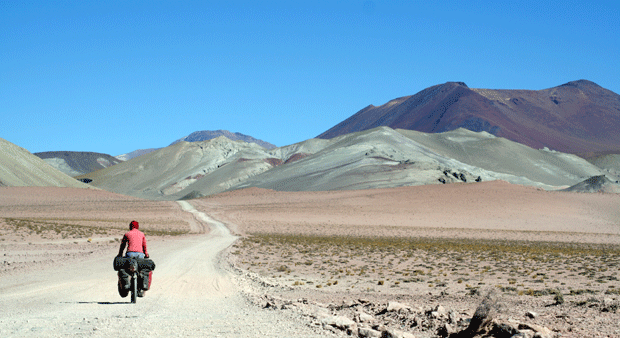
In reality, the gradients were gentle. But at such high altitude the body strains under even the gentlest of slopes.
I was ecstatic as we passed the border into Chile. Thrilled as we crested Abra Sico and devastated as I saw the straight up climb that lay ahead.
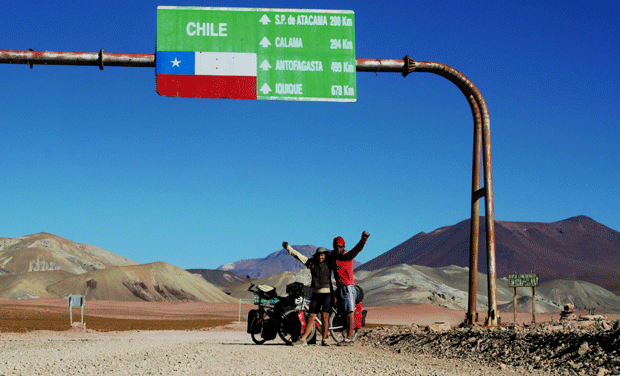
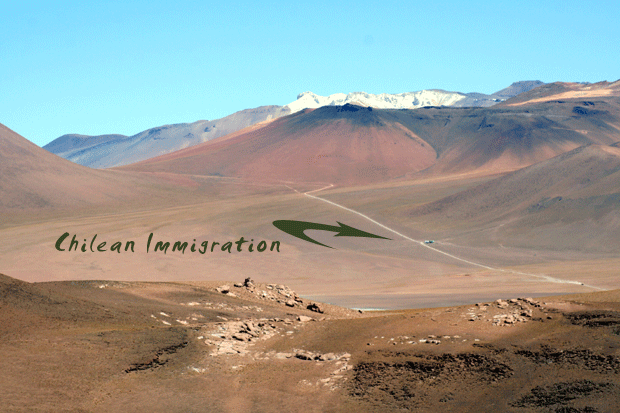
The Chilean immigration outpost was perched across a narrow valley half-way up a steep mountainside.
I was fast running out of steam. The wicked afternoon winds were picking up and, despite my most concerted efforts, my overworked legs refused to turn the pedals.
I would push. And push. And push some more.
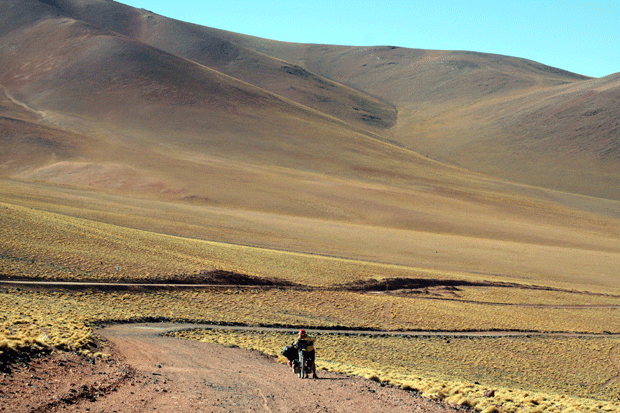
All they way up to the immigration post and four kilometers beyond to Abra Laco and the highest pass of the entire trip.
As the winds whipped us head on, I summoned all my determination to soldier on. From the pass, a quick descent would bring us to the El Laco Mining Camp. We had to make it.
It was our only chance for a reprieve from the freezing conditions that nightfall would bring and a chance to refill on water.
We had to make, and with a herculean effort, we did make it.
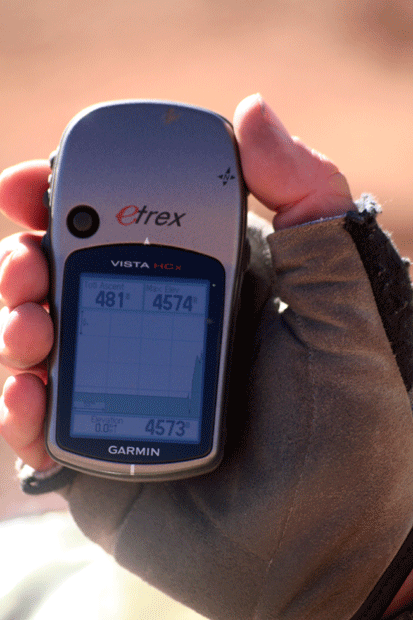
The camp cook greeted us with a smile, showed us to an empty room and thrust a pile of thick woolen blankets at me. Immediately I burrowed into bed and attempted to warm up.
For a third night, we’d been saved from sleeping rough. Now at 4,434 meters I was even more grateful for the relative comfort of the mining camp.
Later, the cook would call to me and insist I wiggle out from under my nest of blankets and trudge down to the kitchen to warm up by the stove. My uncontrollable shivering was abnormal he insisted. I was showing signs of hypothermia.
Hypothermia was probably a bit of a stretch, but as I thrust half my body into the welcome heat of the oven, a wave of gratefulness swept over me.
How would we ever have made it without the kindness and hospitality of these generous souls?
Without their help, we would have had to lug several day’s worth of drinking water. We’d have slept out in the tent, exposed to the elements. Diego, the custom’s guys, the crew at the mining camp, they were all making the hard way round a whole lot easier.
Day seven and were just 100 kilometers from the village of Socaire and a return to civilization. A short day’s ride and an easy descent? No. Absolutely not.
Fantastic scenery awaited us as we forged on to Lago Tuyaito and Salar de Aguas Calientes. But our faithful companion the wind never let up.
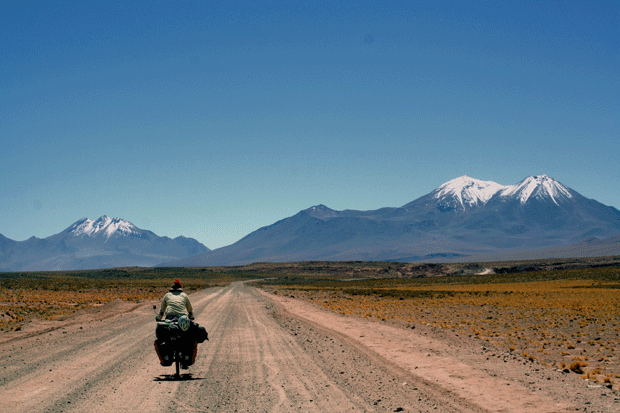
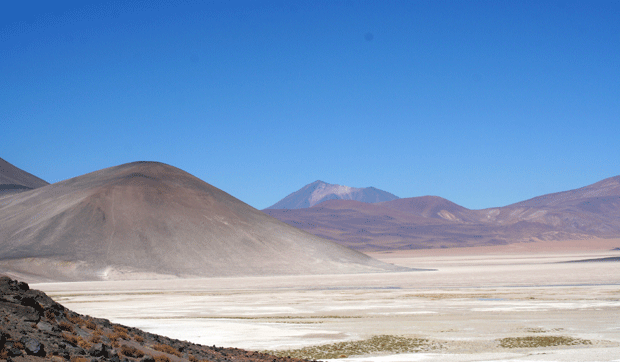
And my trusty Koga had chosen this inauspicious moment to let me down. The crank had worn out and my left pedal continually slipped off. A swift quick every few kilometers was the only thing keeping the bike going.
Now the Koga opted to give up entirely, and the pedal and crank lay uselessly in the sand. Eric and Martin were deep in consultation, like two surgeons discussing a complex medical procedure.
Saving the day, Martin produced some miracle blue glue from deep within his saddle bags. The guys set out cleaning the parts and smearing on the glue. Hopefully it would do the trick and I wouldn’t end up stranded by the side of the road.
Traffic was light. Extremely light. One day there had been only a Brazillian couple on motorbikes and a mining truck. Another day just three trucks in a convoy. Chances of a lift were slim.
The glue would have to set before I could attempt turning the pedals. Not wanting to waste time, I chose to push the bike while I waited.
By this point, the winds were gusting so strongly that I could actually push the bike as fast as the guys could cycle. Well, I had it a little easier since I was crouched down behind Martin who was shielding me from wind’s full force. Martin cycled, I pushed and we made our way slowly forward, Eric bringing up the back.
At such a slow place our efforts were almost futile. As soon as we spotted a gravel pit and potential protection from the wind, we called it a day and set up camp. The GPS informed us we were still at well over 4,000 meters.
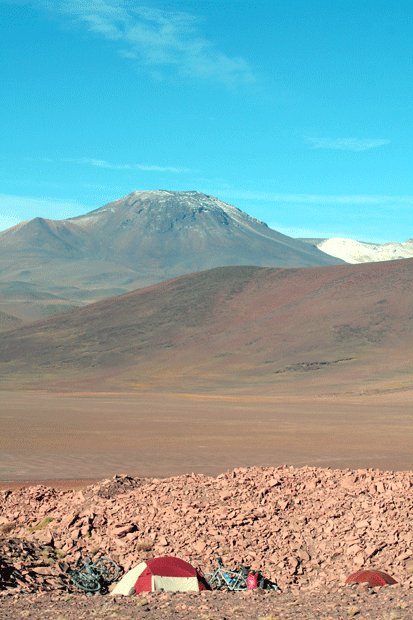
During the night, I was awakened by the high-pitched calls of the vicuña. By morning the howling winds had calmed to a gentle breeze. As the sun began to rise, I was still snuggled deep into my heavy down sleeping bag. Eric lay comatose beside me. Martin called out from his tent that the thermometer read -12 Celsius.
It took a great deal of willpower to emerge from the tent and face the day. The water bottles were frozen solid and the tents covered with a thick layer of frost. Finally we got the coffee going and scraped together the last of our oats to produce an energizing porridge.
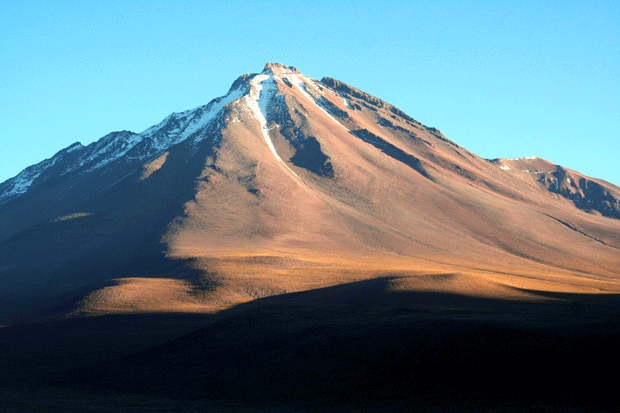
After all the tough times, I felt we deserved an easy day. But it was not to be. Just a few kilometers down the road my rear tire got a puncture, then the right gear cable snapped and after we’d resolved that problem, the front tire got a flat. Thankfully, Martin’s miracle blue glue held the pedal tight.
Mid-afternoon we cycled triumphantly into Socaire. Civilization at long last. Shops, paved roads and even a guesthouse. Martin was already set up in a comfortable room. Frugal cyclists that we are, we settled for pitching the tent on the hotel terrace.
Food supplies were low. It had been five days since we’d crossed a shop. I’d been dreaming of chocolate bars and fresh bread, but in Socaire all the shops were closed up tight for the siesta.
Instant mashed potatoes was all that we could dig up at the bottom of our panniers. I tried not to grumble too much as I hunkered down to our somewhat disappointing celebratory meal.
And then something beautiful happened. The kind woman in charge appeared with a huge platter of food. Admittedly the huge chunks of meat were nothing for me, but it didn’t matter. Eric attacked the food with gusto.
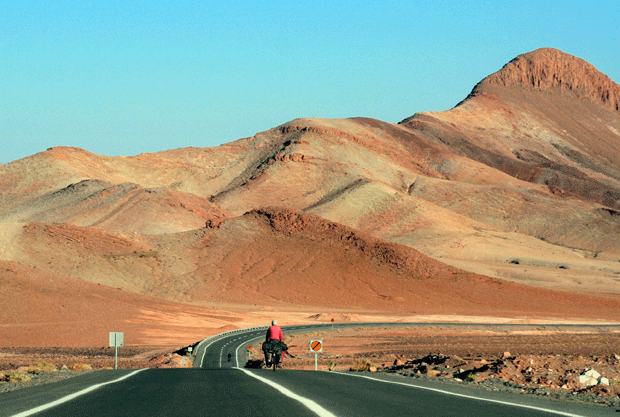
The hard way round was coming to an end. The paved road had begun. San Pedro de Atacama—better known as Gringo Central– was an easy 90 kilometer ride away. Soon we would be surrounded by backpackers whining about the horrific 15-hour bus ride from Santiago and others enthusiastically organizing a tour through the Salar de Uyuni. The tourists would outnumber the locals and touts would vie for guesthouse and restaurant business.
It was time or a rest. Time to let the mind process all the events of the last 9 days. Time to gear up for the next hard way round: a ride through the largest salt flats on earth: Salar de Uyuni.

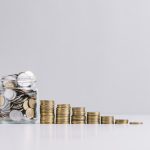
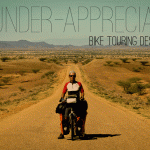
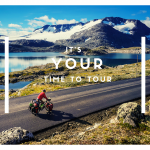
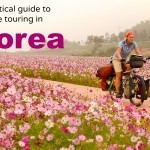
Im am turning green,not because im the hulk….but from jealousy….pure jealousy.